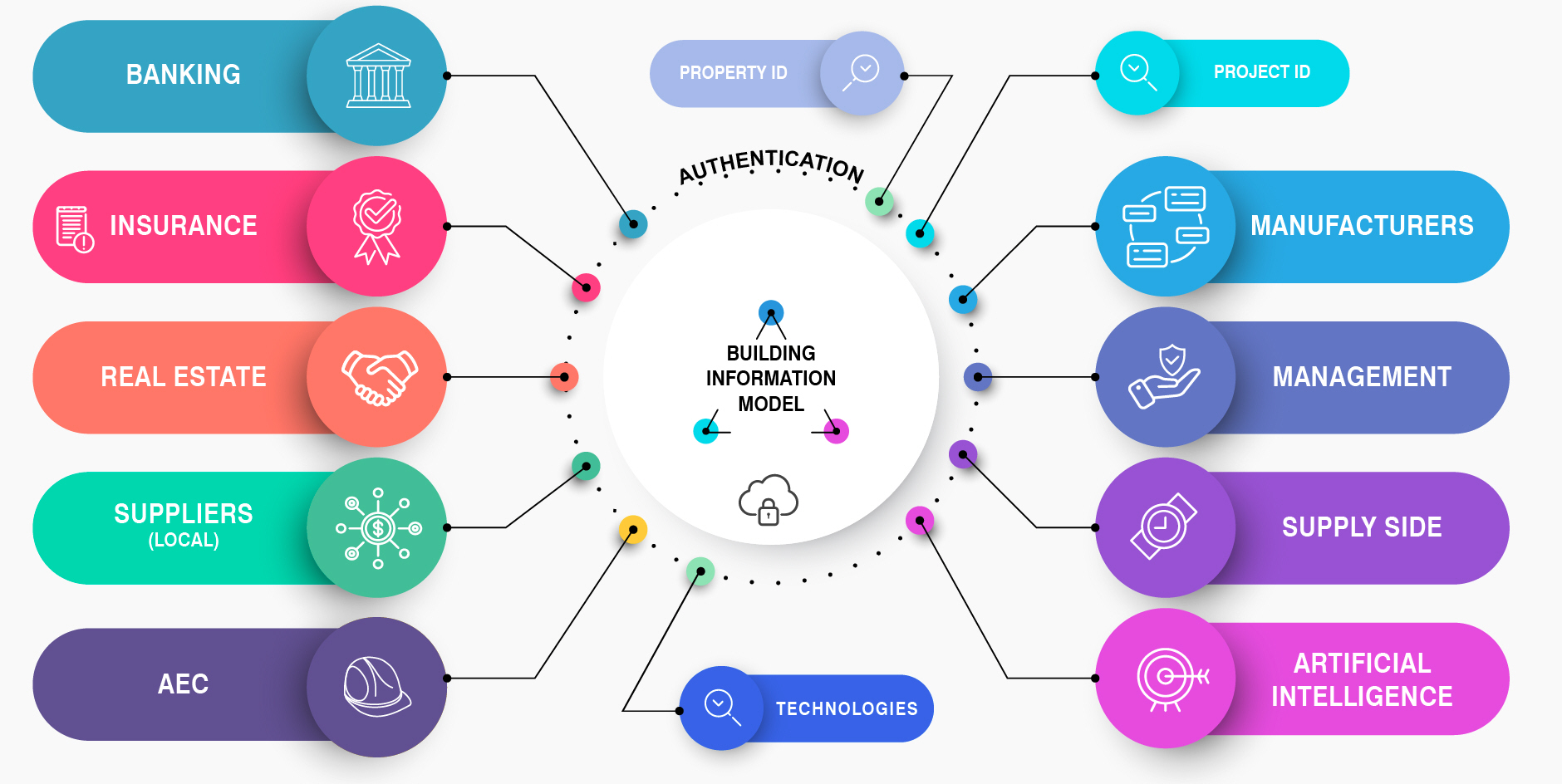Introduction to AI Data Libraries in Real Estate
Real estate spans eight industry sectors so what an AI data library may contain depends on use case and sector. A single data object can include or reference a range of compiled, proprietary and text based data, formats and file types.
Generally a data component starts with a simple text file containing raw use-case data that may describe links to locations of application specific file formats. Property data libraries can be positioned in the cloud with simple storage facilities like Dropbox and iCloud or in proprietary databases like YARDi and RealPage.
In either case, the utility of data and achieving maximum user efficiency requires property data to be dynamically accessible between various real estate ecosystems. Inasmuch, property owners (and management) need autonomous controls for authentication and validating use case access through what is otherwise anonymous technologies.
Many types of AI data libraries are required in the real estate industry and only a few currently operate with limited use. Overall the ten most important to autonomous property operation include:
- Property Specific Libraries (COBie, BIM+)
- Property Management (operation)
- Build (AEC industry)
- Producer (products)
- Regulators (state)
- Financial (confidential)
- Security* (access control)
- Service Provider (proprietary)
- Users (people & technology)
- Transient (disposable)
* SLACi authentication models evaluate multiple layers of industry validations.
The (use-cases) offer an idea of what types of data a complete AI library may contain, the level of security required and who (outside of management) may consume what data. Property operation for example requires internal and external libraries whereas build and construction of an asset is a collection of data from several unique proprietary data library sources.
Coincidentally, data collected during build and construction instantly becomes one of the property’s most important operating or deep data library’s often called a building information model (BIM).
What’s in a Property Data Library
BidForms publishes a sample of information containers (folders) that hold different types of property data and file formats. The list includes at least one database and a library may store confidential or proprietary information that doesn’t transcend a property exchange. The structure of any property dataset will always be defined by structures and other improvements associated with the land track.
For all other purposes, creation, ownership and administration of the property information model (P/BIM) or AI Data Library should transfer upon sale of the asset. In most cases, centrally stored cloud based property data offers accessibility and portability to facilitate transfer of data and administration between owners. Business continuity dictates property data survive changes in ownership and services providers to minimize downtime for scheduled maintenance and unscheduled disruptions.
This utility and the independence of digital data libraries are expected to improve asset valuations while isolating owners from the cost of service provider technologies that leverage data. Operational efficiencies are expected to increase proportionate to the availability and utilization of property data as data-driven technologies emerge in each real estate industry sector.
PM AI Data Library’s
Property management (PM) uses a different type of AI data library. We’ll see familiar folders and data types but PM data models are extended to define the firm’s business operating model (BOM). How it leverages property data, agreements, contracts, financial models will all be defined in digital formats for on-demand assembly, display and reporting tailored to the management firm.
The BOM may include definitions specific to specialties and types of property at various stages of an assets life cycle or shifts in demographics. Technology redefines the concept of boilerplate agreements, contracts and reporting. These documents will likely be assembled from elements of standard language authored to address specific business needs, industries, trades, service providers and types of tenants. Technology knows the objective of any document and autonomously ingest data appropriate for different use case reporting requirements.
Why Build Your Own AI Data Library
There are multiple answers to why but it’s simple, data [ownership] has value! The rise in AI adoption is driving demand for data markets according to GlobelNewswire. Reported to be just over $50 Billion in 2023 markets for data are expected to exceed $480 Billion by 2032. Data-driven application and related AI technologies are sure to follow.
A property and its operation is a fragmented business model where the physical asset is the only constant in an orbital universe of investors, management, tenants and service providers. Data ownership and creation, application, contributions and utility follow that hierarchy of authority which is unique to every property.
The accumulated data is a proprietary component of the property that creates value internally. To service provider ecosystems, this means speed, efficiency and accuracy from reliable details. Service providers will exploit value through anonymous applications (at their own expense) that improve user process and workflow.
The tenfold increase in market demand for industrialized data highlights an external value in real estate details related to each sector. The global utility and adoption of PropTech based on reliable data will further demand for data-driven AI.
Digitally accessible secure property information creates income opportunities. Data consumer use-cases range from the analysis of markets to the performance of systems and equipment of the individual asset. Central storage with service provider interaction signifies a library contains the most reliable source of updated data.
Publishing a Property Data Library!
Creating a data library using the COBie data standards is a simple inexpensive process. PropTech and AI are emerging markets so creating a data library can be approached, implemented and expensed progressively over several years. The total expense for a warehouse may cost no more than $10,000 including digital identity for the property, data APIs and a desktop application to convert O&M and service provider data into a digital library.
CaPSCi establishes a secure technology infrastructure that connects the physical asset to its digital data. SLACi technologies link property operation to service providers and cloud based data libraries. SLACi provides the digital identity (CaPSCi), data APIs and simple owners interface to authorize and manage data access. Users are authenticated [in-part] against the property BIM and management BOM models.
Typical Data Consumers & Contributors
So named for the origins of property data, the supply chain infrastructure around a simple upgrade is dynamically defined by project participants. It dissolves upon completion of individual contributions but the improvements, data and its value remains.

